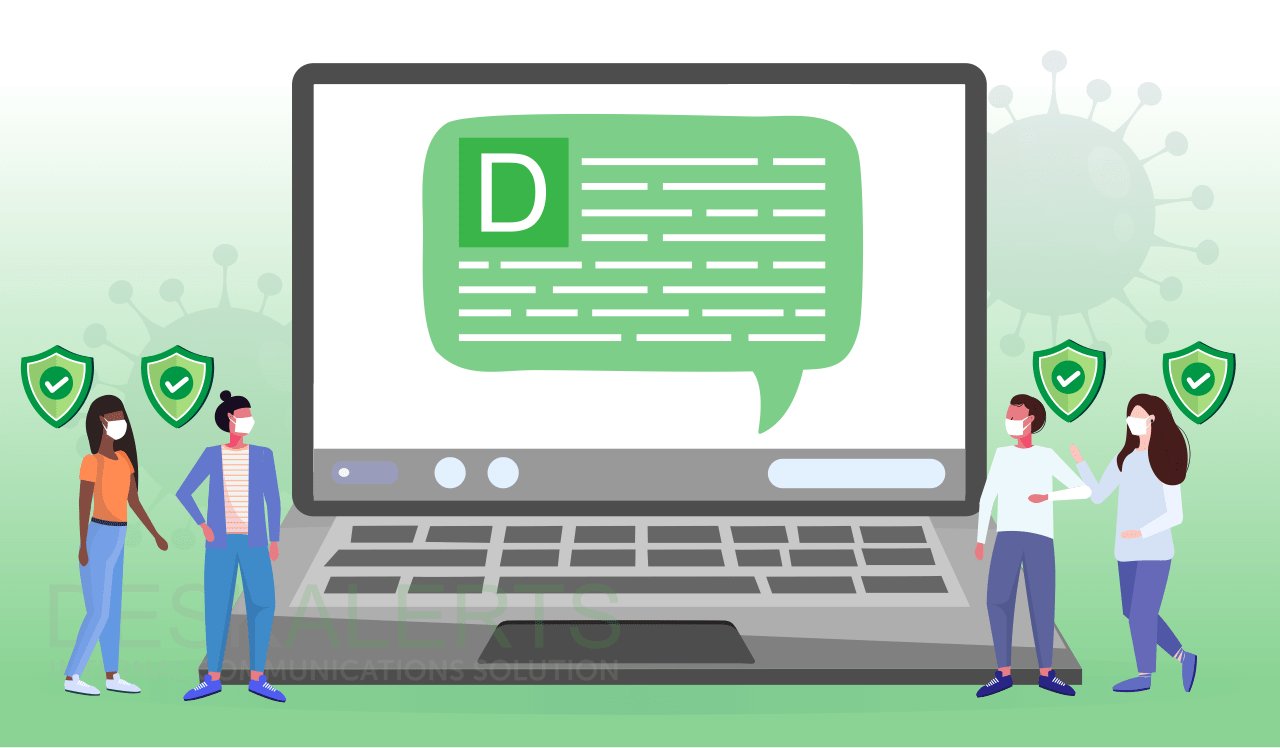 During a global crisis like COVID-19, there’s a lot of focus on the importance of effective business communications. At a time like this, it is critical that your employees understand your company’s approach to issues around COVID-19, the ways that the company will be affected, the strategy to resolve these issues, and ongoing mitigation as the crisis continues.
During a global crisis like COVID-19, there’s a lot of focus on the importance of effective business communications. At a time like this, it is critical that your employees understand your company’s approach to issues around COVID-19, the ways that the company will be affected, the strategy to resolve these issues, and ongoing mitigation as the crisis continues.
The situation is constantly evolving all around the world. Some countries are barely impacted, while others have a large chunk of their populations under mandatory government lockdown. And things can change rapidly in just a few short days.
Your business needs to be prepared to deal with a range of scenarios and be ready to communicate to your employees as soon as possible.
A lack of clear, consistent information from senior management as the situation evolves and unfolds could cause unnecessary fear, anxiety, anger and panic among your employees. They may feel disengaged and disempowered.
And while it may be tempting for some organizations to focus on external communications at a time like this, remember that neglecting your internal communications could be seen as neglecting your employees and your duty of care to them… which could, in turn, become an external communication and reputational issue you’ll have to manage on top of everything else.
When and how to issue coronavirus internal communications
When you’re developing your coronavirus internal communication plan, take into account that one of the biggest time delays in communicating quickly when things change is writing the messaging to employees. You can help to alleviate this by having templates written beforehand that you can make minor changes to and distribute as appropriate, using your preferred communications channels.
Always use clear, consistent messaging and communicate the facts that have been provided by a reputable source.
The following checklist can be used to ensure you’re communicating with your employees when you should be, as events unfold.

1. Communicate hygiene and safety issues
There are a number of different messages you can promote with your employees about appropriate hygiene, health and safety.
This includes:
- The importance of washing hands and using hand sanitizer
- How to wash hands properly, as per the World Health Organization guidelines
- Why employees should avoid touching their faces
- What to do when coughing or sneezing
- How to practice social distancing effectively
- What your employees should do if they become ill or come in contact with a confirmed case of COVID-19
- Any other health protocols specific to your workplace, eg: what surfaces are being cleaned and how often.
2. Communicate company policies
Existing company policies should be communicated to staff whether they are working from home or in the office throughout the crisis. You will probably have new policies that emerge during the crisis that you also need to communicate.
Examples include:
- Annual leave, sick leave policies
- Cybersecurity policies
- Workplace health and safety policies
- Travel policies – particularly where your employees are able to go and not go. These may change as borders close and borders open over time.
For example, a Google employee tested positive for COVID-19 after traveling to Italy so the company announced a ban on international travel.
3. Communicate working from home protocols
Your company may already have working from home protocols or it may need to develop some in response to the growing need for employees to work remotely.
Things you need to consider communicating include:
- Who is allowed to work from home and who needs to attend the office
- What the triggers will be for everyone to work from home
- What employees need to do to prepare to work from home, for example take laptops home every night in case there is a lockdown declared
- What steps employees must take to ensure they have a safe work environment at home
- How employees and managers should communicate with one another to set work priorities and meet KPIs
- How employees can observe security and cybersecurity measures while working remotely

4. Communicate specific impacts of COVID-19 on your business operations
COVID-19 is having enormous impacts on businesses all over the world, resulting in entire industries unable to function while others are being overwhelmed by demand.
Some of the things that could affect your business that employees need to know about include:
- Your organization’s business continuity plan
- If you need to have a partial shutdown or a full shut down at any stage
- If some functions, projects etc. will be put on hold
- What your revenue projections now look like.
Apple, for example, has announced that it probably won’t meet its revenue guidance for the first quarter.
- What are the key priorities for your business during the crisis?
- If your stock price been affected drastically
- If you had any employees test positive for COVID-19 and have they been in contact with other employees or clients.
For example, Amazon directed its employees to begin working from home when an employee contracted coronavirus.
- If any employees die as a result of COVID-19
- If you had any customers or clients confirmed with COVID-19 who have been in contact with your employees and/or visited your premises
- If you need to close any offices, stores, restaurants, factories, facilities etc.
- If you need to cease operations
- If you need to lay off employees
- If you need to increase operations or shift your focus.
For example in the United Kingdom, companies like Rolls Royce – an automobile manufacturer – and Dyson – an appliance manufacturer – have been asked by the government to contribute to the COVID-19 response and begin manufacturing much-needed medical ventilators.
- If you are experiencing a surge in demand
- If you need to hire extra employees to meet the surge and demand
- If you need to open more facilities
- When there is a shortage of critical supplies
- When there is an urgent shipment of critical supplies
5. Communicate how local government responses will affect your employees
Around the world there are different responses to the pandemic in place by different governments. Most countries have closed their borders. Some entire populations are in lockdown. In other countries it is only being enforced in certain regions.
As the situation evolves you should ensure your employees are aware of how it will affect your workplace, including:
- Any measures in place such as distances that people need to be apart or numbers of people who can be present at once
- If your industry has been ordered to close or change the ways it functions
- If there are travel restrictions
- If there is a lockdown
- If there are curfews

6. Communicate when things will resume again
Eventually, things will resume again… we just don’t know when. You need to be prepared for that happening and let your people know what is planned.
Including:
- A date for when operations will resume “normally”
- What systems will be online
- Which buildings will reopen and when
- If there are any strategies in place to transition to regular operations
- What the focus of your business will be for the short, medium and long terms
- If you will need to reduce or increase employee levels
- What position the company is in following the pandemic crisis
- Acknowledge how your employees responded to the crisis and helped to get the company through it.
Remember that communicating with your employees is essential and there may be more challenges than usual in reaching them while they are working from home. Look at using a range of communications channels to be sure that your messages are cutting through and reaching them and they don’t miss out on any critical information.
 Caroline Duncan
Caroline Duncan
 During a global crisis like COVID-19, there’s a lot of focus on the importance of effective business communications. At a time like this, it is critical that your employees understand your company’s approach to issues around COVID-19, the ways that the company will be affected, the strategy to resolve these issues, and ongoing mitigation as the crisis continues.
During a global crisis like COVID-19, there’s a lot of focus on the importance of effective business communications. At a time like this, it is critical that your employees understand your company’s approach to issues around COVID-19, the ways that the company will be affected, the strategy to resolve these issues, and ongoing mitigation as the crisis continues.








